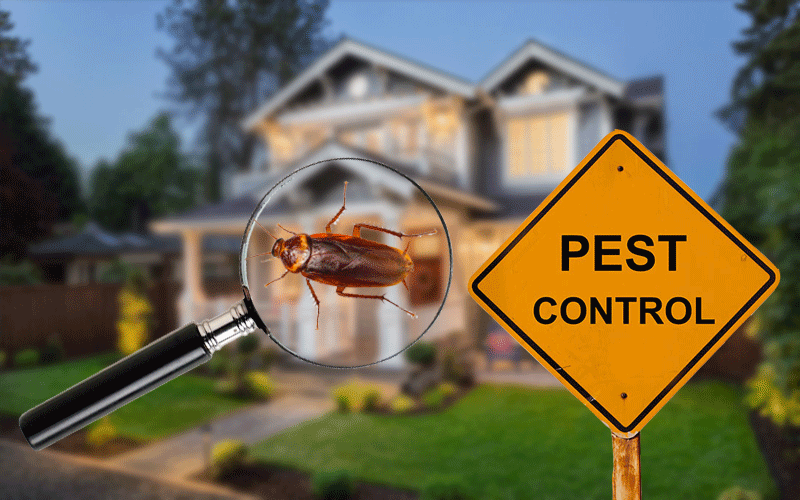Dependable A1 Bed Bug Exterminator Charlotte - Get Rid of Bed Bugs Rapid
Bed Insect Therapy Breakdown: Comparing Chemical Vs. Non-Chemical Solutions
In the world of insect control, specifically when dealing with the consistent concern of bed pests, the choice between chemical and non-chemical treatment services can be an essential one. Both methods use distinct advantages and disadvantages, affecting aspects such as effectiveness, security considerations, and total expense. By examining the nuanced information of each method, a more clear understanding of which path to go after in addressing a bed pest invasion can be achieved.
Effectiveness of Chemical Therapies
Chemical treatments for bed bug problems have been commonly recognized for their potent and quick efficiency in eradicating these insects. When thinking about the performance of chemical therapies, it is crucial to recognize that they can give a fast and thorough service to a bed bug trouble. Professional pest control operators often rely upon pesticides to target bed insects at numerous phases of their life cycle, consisting of eggs, adults, and fairies. These chemicals generally work by interfering with the bed insects' nerves, leading to paralysis and eventual fatality.
Moreover, chemical treatments have the benefit of using residual impacts, meaning that they can proceed to eliminate bed pests even after the preliminary application. This recurring action is specifically helpful in combating any prospective re-infestations. In addition, the fast activity of chemical therapies can bring relief to individuals dealing with severe bed insect problems, allowing them to restore control of their home rapidly.
Security Issues With Chemical Solutions
One crucial element that needs careful factor to consider when utilizing chemical options for bed bug therapy is making certain the safety of owners and the environment. Exposure to certain chemicals made use of in bed bug therapies can lead to respiratory concerns, skin irritation, or various other adverse responses, particularly in individuals with pre-existing conditions or level of sensitivities.
Furthermore, the ecological effect of chemical solutions is one more substantial factor to consider. Some pesticides utilized in bed bug therapies might be dangerous to beneficial pests, wildlife, and environments if they seep into the soil or water systems. It is necessary to utilize chemical treatments deliberately, following security standards, and taking into consideration much less toxic alternatives to reduce these dangers and make sure the effective and safe administration of bed pest problems.
Benefits of Non-Chemical Approaches
Thinking about the prospective safety and security issues and ecological impact associated with chemical options for bed pest therapy, checking out non-chemical techniques presents an appealing choice with a number of unique advantages. Non-chemical treatments are eco friendly, as they do not add to air or water pollution, making them a lasting choice for bug control.
Additionally, non-chemical remedies can be efficient in targeting bed pests, including hard-to-reach locations where chemical therapies may not pass through. Methods such as warm therapy, vacuuming, heavy steam cleaning, and bed mattress encasements give thorough eradication without making use of unsafe chemicals. In addition, non-chemical techniques can be much less disruptive, calling for very little prep work and enabling quicker reentry into treated areas. Generally, going with non-chemical bed bug treatment methods not only focuses on safety and security and environmental management but likewise makes certain effective and detailed insect control.
Limitations of Non-Chemical Treatments

Furthermore, non-chemical therapies often require several applications to attain successful elimination. This can be taxing and might not always ensure full removal of all bed pests and their eggs, particularly in surprise or hard-to-reach locations.
Additionally, the success of non-chemical treatments heavily counts on appropriate implementation and thoroughness, which can be challenging for individuals without expert proficiency. Inadequate application of non-chemical techniques might lead to insufficient elimination, causing relentless infestations and the need for additional therapies.
Consequently, while non-chemical therapies have their benefits, it is necessary to recognize these limitations and consider them when determining the most effective method for managing bed bug infestations.
Cost Contrast: Chemical Vs. Non-Chemical Options
Offered the constraints connected with non-chemical therapies, an important aspect to review in the context of bed pest management is the cost contrast in between chemical and non-chemical choices. Chemical treatments generally involve the application of pesticides by specialists, which can range from $250 to $900 per space, depending on the seriousness of the infestation and the size of the location to be dealt with. explanation On the other hand, non-chemical treatments like warm treatment or heavy steam can be more pricey, with expenses varying from $1,000 to $6,000 for an entire home. While the first cost of chemical therapies might seem lower, several treatments might be called for to totally eliminate the problem, possibly raising the overall price. On the other hand, non-chemical alternatives may provide an extra sustainable and environment-friendly service, although they can be cost-prohibitive for some people. Eventually, when considering the price of bed insect therapy choices, it is essential to consider the in advance expenditures against the performance and long-term sustainability of the selected technique.
Verdict

Thinking about the possible security worries and ecological impact linked with chemical remedies for bed pest therapy, exploring non-chemical strategies presents a promising original site choice with a number of distinct benefits.Offered the limitations associated with non-chemical therapies, a necessary element to examine in the context of bed pest management is the expense comparison in between chemical and non-chemical choices. In comparison, non-chemical treatments like heat therapy or heavy steam can be more pricey, with prices ranging from $1,000 to $6,000 for a whole home. While the initial price of chemical therapies may appear lower, multiple treatments may be required to which termite treatment is best totally remove the infestation, potentially increasing the general expense.In conclusion, when contrasting chemical and non-chemical bed insect treatment options, it is important to consider effectiveness, safety and security, advantages, restrictions, and expense.